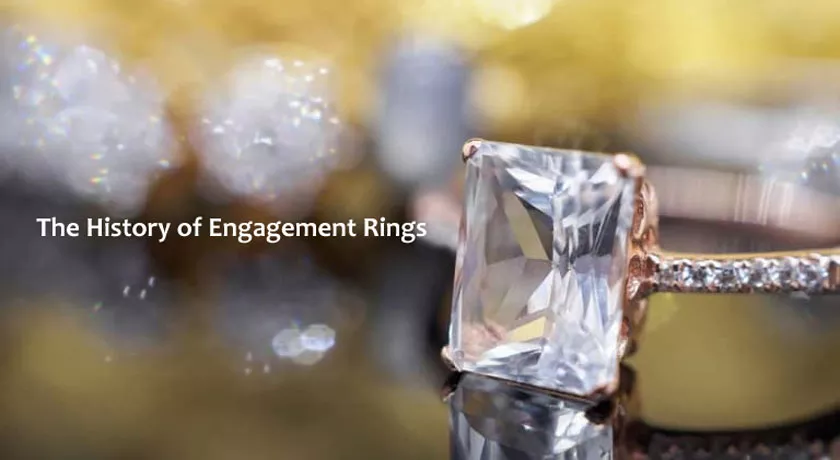Engagement rings have become a symbol of love and devotion in modern relationships, symbolizing the connection between two people. But where did this tradition start?

The History of Engagement Rings: From Ancient Times to Modern Day
Engagement rings have been around since ancient times, symbolizing devotion ever since. Let’s discover histore with help of Yourasteria.com — handmade engagement rings store.
Ancient Times
Rings have long been used as a symbol of engagement and marriage since ancient times. The Egyptians believed circles represented eternity, so they used rings as an expression of their everlasting love.
These rings were made out of woven reeds, leather, or bone and worn on the fourth finger of the left hand because it was believed that a vein there led directly to the heart.
Romans also used rings as a symbol of engagement and marriage. These ornaments could be crafted out of metals such as iron, gold, and copper and were often engraved with images of clasped hands, doves, or other romantic images.
Middle Ages
Engagement rings became increasingly popular among the wealthy during the Middle Ages. Diamonds and other precious stones began being used in engagement rings, which were usually set in silver or gold. Rings could often be engraved with romantic phrases or even had secret messages hidden inside for added sentimentality.
In 1477, Archduke Maximilian of Austria presented Mary of Burgundy with a diamond engagement ring – marking the first recorded instance of diamond being used in such an item. This set off a trend among those of means; diamonds became increasingly popular in engagement rings over time.
Victorian Era
Engagement rings experienced a resurgence during the Victorian era. Queen Victoria herself donned a diamond engagement ring when she proposed to Prince Albert in 1839. These rings were typically set in yellow gold with intricate designs like flowers or leaves engraved on them.
In the late 1800s, diamond mining in South Africa opened up a world of affordable options that became more widely accessible. This trend led to an explosion in diamond engagement rings among middle class consumers.
Modern Times
Tiffany & Co. introduced the “Tiffany setting,” revolutionizing how diamonds were set in engagement rings. This allowed more light to pass through the diamond, creating more sparkle and sheen – becoming one of the most popular settings even today.
Due to rationing and economic hardship during World War II, engagement rings became less elaborate due to rationing. Simple bands with smaller diamonds or other gemstones became increasingly commonplace.
In the 1950s and 1960s, the diamond industry launched a marketing campaign to promote the concept that an engagement ring should cost two months’ salary.
This combined with post-war economic boom led to an explosion in diamond engagement rings as people realized they could serve as symbols of love and commitment.
Nowadays, engagement rings come in an array of styles from traditional diamond solitaires to vibrant gemstones and unique designs. Many couples opt to customize their rings by engravings or using a family heirloom item as part of the design.
Conclusion
Engagement rings have a rich and fascinating history, filled with symbolism, romance and tradition. From ancient times to modern day, engagement rings have been used as an emblem of love and commitment.
Whether you choose a traditional diamond solitaire or opt for something truly unique, an engagement ring remains a timeless testament of your devotion and love for your partner.
